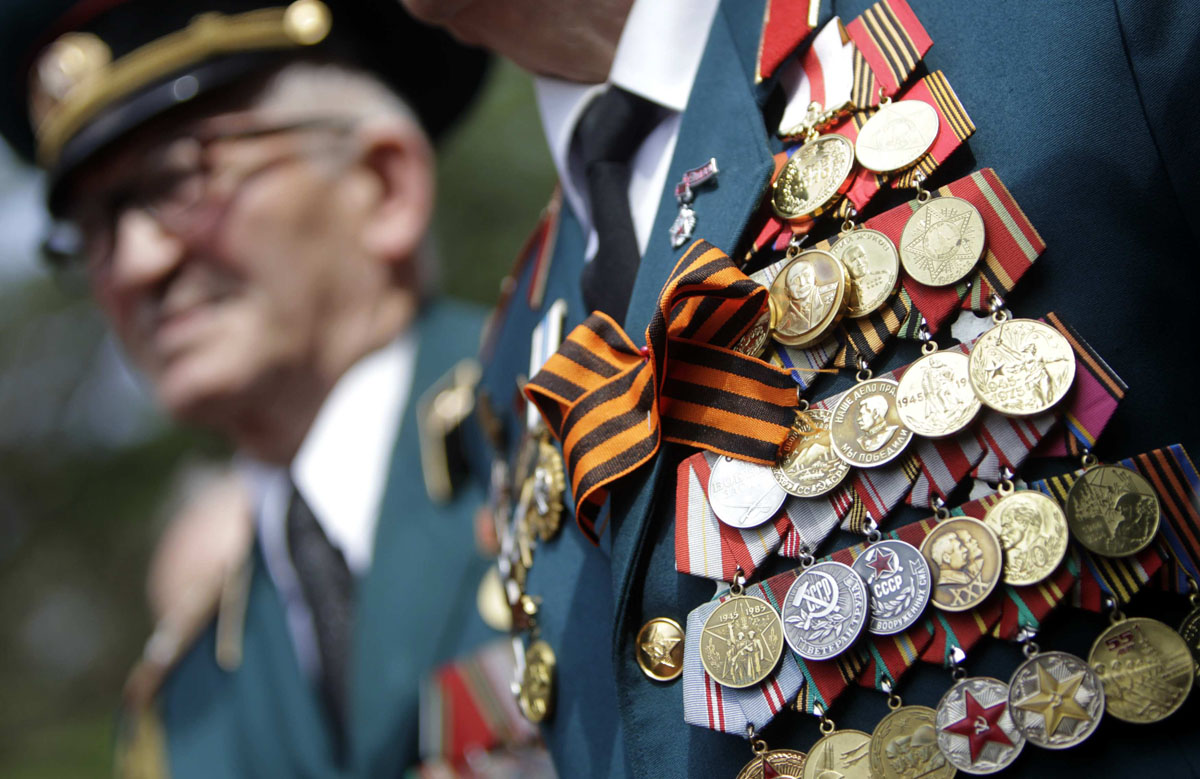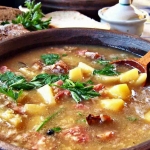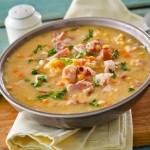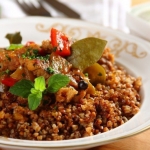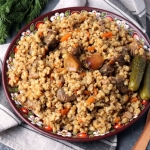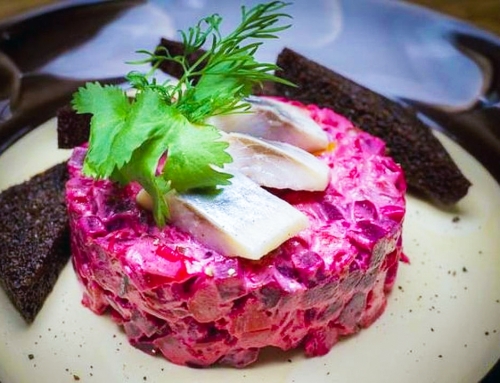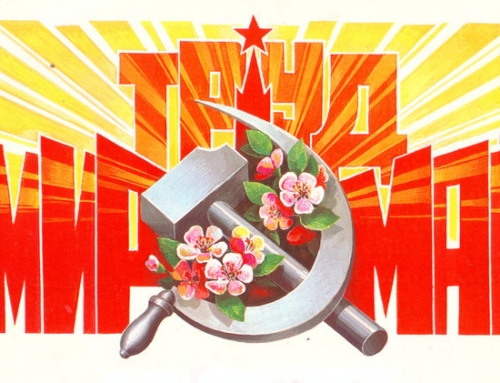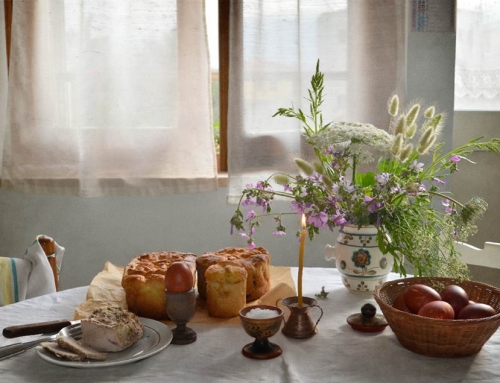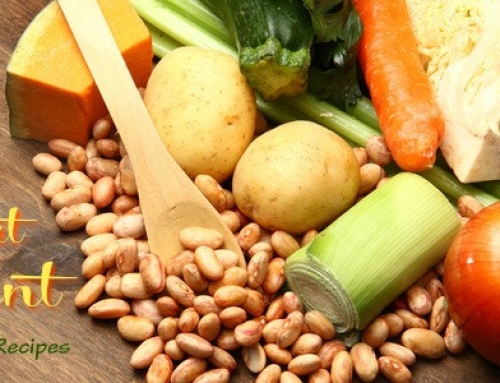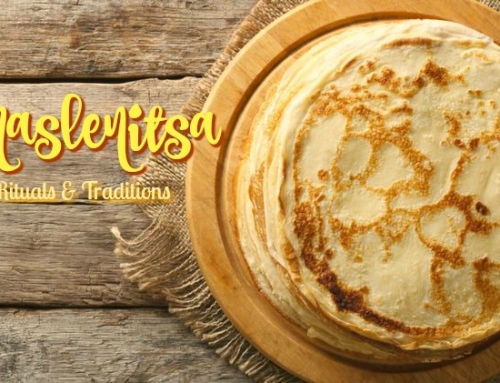What did the our soldiers eat at the front World War II ?
“Our cook made various soups and, sometimes, main dishes, called “vegetable disorder” – it was healthy and besides super tasty.
Maize (corn) groats was sent by the allies, at the end of the war – spring of 1944.
This was something new, therefore no one knew what to do with it.
They began to add it to the bread, thus making the bread become fragile and quickly become stale.
This situation therefore caused complaints of soldiers.
Soldiers complained to the cooks, cooks scolded the allies, who brought us maize.
But most important that our chef was not upset:
– first – he took the crescent rate of Maize
– second – sent a group of soldiers to the steppe, asking to collect almost everything – quinoa, alfalfa, shepherd’s bag, sorrel, wild garlic
– third – cooked delicious to taste and beautiful in appearance сorn patties.
These were such flat cakes with greens; bright, yellowish outside and burning – green inside. They were soft, fragrant, fresh, like spring itself.
Better than any other means, these cakes reminded the soldiers of the house and about peace life. Each of us dreamed of Victory Day!

Two weeks later, the cook made hominy (steep brewed cornmeal porridge).
For use instead of bread hominy cooked more thick and cut into pieces.
Almost the entire battalion became acquainted with this national Moldovan dish.
You know, our cook tried to make even simple acorn coffee tastier and more aromatic, adding there various herbs. First of all, a simple human attitude to the people on the battlefield. At any moment the soldier could die. Therefore any moment could be the last.”
From the memories of veterans of the World War II.

Field kitchen is a constant element of the Victory Day Parade in Russia.
The farther from the forties of the last century, the it is harder for us to imagine how people and soldiers survived in it’s a tough time.
Victory Day is celebrated on May 9th in Russia and many other former Soviet Republics. The country’s second most popular holiday – after New Year’s Day – marks Germany’s surrender to the Soviet Union in 1945, and becoming the canonical end of World War II, also known as the Great Patriotic War.
For more than 70 years, Russia has commemorated millions of people who perished and honor the surviving Veterans. All nation celebrate the Victory Day.
Parades are organized throughout the county as tribute to the bravery and heroism of the people who saved their country from Nazi invasion.
Veterans proudly wear medals of honor on their chests as they share their stories of war and victory with younger generations.
They carry fresh flowers, particularly red carnations and tulips and lay them down as wreaths at memorial sites to demonstrate respect for their fallen fellows.
Families gather around festive tables to celebrate survivors and recall the struggles of their parents, grandparents and great-grandparents.
At the parades, everyone is invited to feel the general mood and taste the dishes of the Field Kitchen.

What did the soldiers eat?
How was the field kitchen arranged?
What dishes were respected by the Red Army?
Labor in the army kitchen during the wartime was deprived of all romanticism.
At night, the outfit people did hard, exhausting work: they cleaned the never-ending potato breasts, washed and scraped boilers …

Here is the complete ration of soldiers during the World War II
Norm number 1 daily allowance of the Red Army and the commander the composition of combat units of the army:
Bread: October-March – 900 g
April-September – 800 g
Lard – 30 g
Wheat flour 2nd grade – 20 g
The food problem in the army was solved Much better than in the rear.
There was a ration.
| Vegetable oil – 20 g Groats different – 140 g Vegetables: potato – 500 g cabbage – 170 g carrot – 45 g beets – 40 g |
onion – 30 g greens – 35 g Pasta – 30 g Tea – 1 g Meat – 150 g Salt – 30 g |
Fish – 100 g Tobacco – 20 g Sugar – 35 g Matches – 3 boxes (per month) Soap – 200 g (per month) |
Field cuisine is popular and relevant to this day.
We bring to your attention recipes that you can easily repeat in your kitchen!
Kulesh

Kulesh
Ingredients
- 1 glass millet
- 5 pcs potatoes (medium)
- 200 g lard
- 3 pcs onion (medium)
- 2 liters water
- to taste salt to taste
Instructions
- Rinse the millet thoroughly. Put it in boiling water and cook until half cooked. Then add the potatoes, chopped into large cubes.
- Make pork cracklings of the lard, put onion into slices with medium squares 5 minutes prior to readiness, fry, stirring constantly.
- When the millet and potatoes are fully cooked, season the kulesh, salt to taste.
- Then cover with a lid for 3-4 minutes or wrap in something warm and let it brew.
- Recipe option: instead of lard (or with it), you can add a can of stew to the Kulesh.
Pea soup with lard

Pea soup with lard
Ingredients
- 500 g split peas — 500 g
- 4 pcs potatoes (medium)
- 3 pcs carrots (medium)
- 2 pcs onion (medium)
- 300 g fat
- 1 can stew (400-800g)
- 4 liters water
- salt to taste
Instructions
- Wash peas and soak overnight.
- Then cover with water and bring to a boil.
- When it boils, remove the foam, reduce the heat and cook for about an hour.
- Potatoes, onions, carrots and lard cut into cubes, add to the peas and cook until the vegetables are almost soft.
- Then put the stew, stir and salt. Keep on heat for another 10 minutes, stirring occasionally. If desired, in the soup when serving, you can add green onions and other fresh herbs.
Potatoes with pork cracklings and onions

Potatoes with pork cracklings and onion
Ingredients
- 6 pcs potatoes (medium)
- 200 g lard
- 2 pcs onion (medium)
- salt to taste
Instructions
- Potatoes thoroughly wash and boil in their jackets until tender.
- Cut the lard into cubes and fry the pork cracklings.
- Onions cut into thin half-rings.
- Put the cuted onion into halves potatoes on a plate, pour it with melted fat, put on top of the pork cracklings and onion, season with salt generously.
Buckwheat with stew

Buckwheat with stew
Ingredients
- 1 cup buckwheat
- 2 cups water
- 1 can stew (~400g)
- 2 pcs Bay leaf
- salt to taste
Instructions
- Wash buckwheat and cook until tender.
- Put the stew in it, add salt and Bay leaf, mix thoroughly and simmer for 10 minutes under the lid on the lowest heat
Barley with meat

Barley with meat
Ingredients
- 1.5 cups pearl barley
- 1 kg beef on bones
- salt and spices to taste
Instructions
- Wash pearl barley and soak overnight.
- Cook the beef so that the meat moves away from the bones.
- Pour pearl barley with four cups of broth and cook until tender.
- Meat cut into small pieces, mix with barley, add salt, add spices and 20 minutes to simmer the porridge over a small fire. If desired, it is possible to add butter or vegetable oil.
Recipe option:
- if you do not want to mess with the meat, then just boil the barley in ordinary water and mix with the stew — cold or fried with onions.
Bottom Line
On this day, on the table often simple and delicious, as a rule, no exotics and delicacies.
To feel the atmosphere of that time, it is best to cook in a pot on the fire, as our grandfathers and great-grandfathers once cooked.
With the Day of the great Victory, people of Earth!
Remember, whatever difficulties were in life, most importantly, to avoid war!


